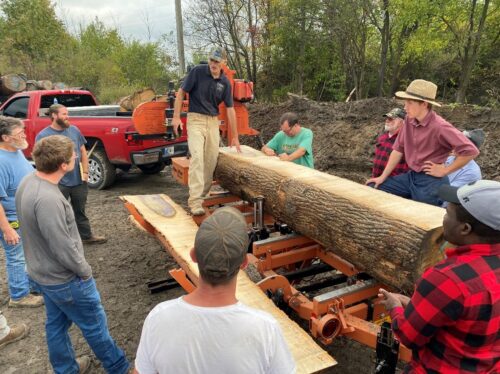 Purdue University - Extension - Forestry and Natural Resources
Purdue University - Extension - Forestry and Natural Resources
Got Nature? Blog
Congratulations to Liz Jackson, FNR Extension Specialist, on receiving the 2025 Indiana Hardwood Lumbermen’s Association (IHLA) President’s Award. This award is given for exceptional contribution to the forest products industry and to members of IHL. We are proud to celebrate her achievements along with seeing her featured in the April 2025 edition of the Agriculture & Natural Resources (ANR) newsletter.
Agricultural & Natural Resources (ANR) Newsletter: Liz has worked as an Extension specialist associated with three forestry organizations since March 2004. Liz obtained her BS in forest products (’82) from Purdue’s Forestry & Natural Resources Department and MS in business management (’84) from Krannert School of Business under a special forestry/business master’s program.
Before coming to Purdue Extension, Liz spent 15 years in wood products manufacturing as a plant manager at Aristokraft cabinets (now MasterBrand) and purchasing and inventory control manager at Lafayette Venetian Blind.
Liz’s Extension role is to provide programs and products on sustainable forest management and forest stewardship to address woodland owners’ concerns and needs. While representing the Department of Forestry and Natural Resources, she works on behalf of three organizations.
The Hardwood Tree Improvement and Regeneration Center (HTIRC) is a research partnership between Purdue FNR and the USDA Forest Service focusing on management, protection and improvement of fine hardwood species. For the HTIRC she coordinates annual meetings, research conferences and educational programs.
For the Indiana Forestry & Woodland Owners Association (IFWOA) and National Walnut Council, she represents the interests of the members and manages all business of the associations, including board meetings, annual conferences and education programs, membership and finances, and communications, including newsletters, websites and social media.
Liz is involved in many partnerships around the state, including as a member of the Extension Invasive Species Working Group, on the editorial board for Indiana Woodland Steward newsletter, member of NRCS state technical committee, and advisory partner with Indiana DNR Division of Forestry Forest Stewardship Committee, Sentinel Landscapes, and Let the Sun Shine In Indiana programs.
A highlight of her career was traveling to Washington, D.C., in 2005 to see Sen. Richard Lugar of Indiana and representatives from HTIRC and Indiana forestry plant an Indiana walnut tree on the U.S. Capitol grounds. Ten years later she returned to the site and was thrilled to find the tree and see it was thriving.
Resources:
Indiana Forestry & Woodland Owners Association (IFWOA) YouTube Channel
Observing Seasonal Changes in Nature Webinar with Amanda Wanless, IFWOA YouTube Channel
Magnificent Trees of Indiana Webinar with Author Carroll Ritter, IFWOA YouTube Channel
Ask the FNR Expert: Pests in your Woods, Purdue Extension – Forestry and Natural Resources (FNR) YouTube Channel
Woodland Stewardship for Landowners, Playlist, Purdue Extension – FNR YouTube Channel
Directory of Professional Foresters, Indiana Forestry & Woodland Owners Association (IFWOA)
Indiana Woodland Steward E-newsletters, Eleven Member Organization
Invasive Species, Playlist, Purdue Extension – FNR YouTube Channel
Invasive Plant Species Identification, Video, Purdue Extension – FNR YouTube Channel
Subscribe – Purdue Extension-FNR YouTube Channel
Agricultural & Natural Resources (ANR), Purdue Extension
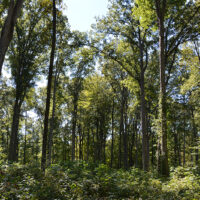 Indiana Forestry & Woodland Owners Association (IFWOA) News: If you live in Indiana and own more than ten acres of woodlands, then you may want to enroll in the Classified Forest and Wildlands Program offered through the Indiana Department of Natural Resources (DNR), Division of Forestry. This program encourages timber production, watershed protection, and wildlife habitat management on private lands in Indiana. Program landowners receive a property tax reduction in return for following a professionally written management plan. In addition to the tax incentive, landowners receive free technical assistance from DNR foresters and wildlife biologists, priority for cost-share to offset the cost of doing management, and the ability to “green” certify their forests. The minimum requirement for program enrollment is 10 acres of forest, wetland, shrubland, and/or grassland.
Indiana Forestry & Woodland Owners Association (IFWOA) News: If you live in Indiana and own more than ten acres of woodlands, then you may want to enroll in the Classified Forest and Wildlands Program offered through the Indiana Department of Natural Resources (DNR), Division of Forestry. This program encourages timber production, watershed protection, and wildlife habitat management on private lands in Indiana. Program landowners receive a property tax reduction in return for following a professionally written management plan. In addition to the tax incentive, landowners receive free technical assistance from DNR foresters and wildlife biologists, priority for cost-share to offset the cost of doing management, and the ability to “green” certify their forests. The minimum requirement for program enrollment is 10 acres of forest, wetland, shrubland, and/or grassland.
“Once enrolled in our program, you get a reduced property tax assessment,” says Gretchen Herbaugh, District Forester with Indiana DNR serving southwestern Indiana.
“Property can be anything from forest ground to native grasses to pollinator habitats to wildlife food plots—we span a large range of habitat types and management styles,” Herbaugh says.
For full IFWOA article view: Indiana DNR Offers a Special Program for Woodland Owners.
To learn more about the program with more resources view the Hoosier Ag Today article, Indiana DNR Offering a Special Program for Woodland Owners.
Resources:
Subscribe, IFWOA YouTube Channel (includes The Nature of Oaks, Be Tick Aware, Population Ecology of Deer and more)
Find an Indiana Professional Forester, Indiana Forestry & Woodland Owners Association (IFWOA)
Purdue Arboretum Explorer
Native Trees of the Midwest, The Education Store
Shrubs and Woody Vines of Indiana and the Midwest, The Education Store
Investing in Indiana Woodlands, The Education Store
Forest Improvement Handbook, The Education Store
ID That Tree, Purdue Extension-Forestry & Natural Resources (FNR) YouTube playlist
Woodland Management Moment , Purdue Extension-FNR YouTube playlist
District Foresters for 10 plus acres, Indiana Department of Natural Resources
Financial and Tax Aspects of Tree Planting
Diana Evans, Extension and Web Communication Specialist
Purdue University Department of Forestry and Natural Resources
Liz Jackson, Engagement Lead
Indiana Forestry & Woodland Association (IFWOA)
Agricultural & Natural Resources (ANR) Newsletter: Since joining the faculty at Purdue in 1997, Rado Gazo, a professor of wood processing and industrial engineering, has educated students, industry professionals and the general public about the possibilities of the wood products industry.
In addition to teaching undergraduate courses in Properties of Wood, Wood Products Manufacturing and Furniture Design for CNC Manufacturing, Gazo conducts research focused on evaluating tree, log and lumber quality using CT (X-ray computed tomography), laser and image scanning and related manufacturing. He also investigates the competitiveness of furniture manufacturers as well as the application of industrial engineering techniques to value-added wood products manufacturing.
In 2020, Gazo created Hardwood University, a self-sustaining collaborative program with the Indiana Hardwood Lumbermen’s Association, which aims to provide hardwood industry professionals and landowners in the Central Hardwood region with cutting-edge information and training. Gazo is one of the primary instructors for the program.
Hardwood University, which consists of 10 sessions annually, is intended for new employees in the hardwood industry as well as those preparing for advancement or cross-training. The program, which takes place monthly at various Indiana hardwood plants and Purdue agricultural centers, offers informational and technical sessions on topics ranging from forest taxation to tree and log scaling and grading; log bucking; marketing hardwood veneer, stave and sawlogs; grade-sawing lumber; air drying and kiln drying lumber; hardwood lumber grading; lean manufacturing and logistics; and sawmill efficiency and quality control.
In addition, Gazo has worked with nearly 300 companies, providing technical assistance, troubleshooting and consulting services as well as implementation of manufacturing best practices.
To learn more about Rado Gazo’s work view: Rado Gazo, Forestry and Natural Resources profile page.
To read the rest of the newsletter and view the original article, see the ANR November 2024 Newsletter.
Resources:
Wood Products Manufacturing Technology Minor, FNR Minor
Hardwoods of the Central Midwest, The Purdue Arboretum
Wood Products, Purdue Extension – Forestry & Natural Resources (FNR)
Wood is Best Video, Forestry and Natural Resources YouTube Channel, Woodisbest.org
An Introduction to Trees of Indiana, The Education Store, Purdue Extension resource center
Native Trees of the Midwest, The Education Store
Shrubs and Woody Vines of Indiana and the Midwest, The Education Store
ID That Tree, Playlist, Subscribe to Purdue Extension – Forestry and Natural Resources YouTube Channel
A Woodland Management Moment, Playlist, Purdue Extension – FNR YouTube Channel
Investing in Indiana Woodlands, The Education Store
Forest Improvement Handbook, The Education Store
Finding help from a professional forester, Indiana Forestry & Woodland Owners Association
District Foresters for 10 plus acres, Indiana Department of Natural Resources
Hardwood Tree Improvement & Regeneration Center (HTIRC)
Agricultural & Natural Resources (ANR), Purdue Extension
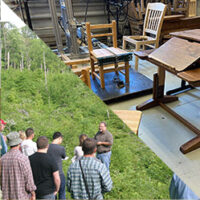 Purdue Extension’s annual report showcases the accomplishments, outcomes and activities that highlight the impact of Purdue Extension across Indiana. Extension specialists and educators provide educational programs and research-based knowledge to help families, individuals, and communities prosper and thrive.
Purdue Extension’s annual report showcases the accomplishments, outcomes and activities that highlight the impact of Purdue Extension across Indiana. Extension specialists and educators provide educational programs and research-based knowledge to help families, individuals, and communities prosper and thrive.
The Purdue Extension – Forestry and Natural Resources specialists featured:
Private Woodland Owners Make Decisions and Take Actions to Improve Acreage Value – project specialist include Lenny Farlee, Ron Rathfon, Don Carlson, and Jarred Brooke, along with county extension educators Dave Osborne, and Phil Woolery. Indiana has 20% forest lands, most privately owned. Forests are important habitats for wildlife and provide environmental and social benefits. Purdue Extension offers Forest Management for the Private Woodland Owner, in-person and virtually. The in-person program has eight 2.75-hour evening sessions and two Saturday three-hour field day tours. Purdue Extension and local forestry and natural resource professionals provide presentations and direct activities. Participants receive a tree measuring stick and a flash drive containing more than 100 publications and resources.
Participant forest management knowledge improved after the program. More than 90% found it useful for making decisions, and 80% plan to take actions in the next year. A participant said, “This course provided exactly the information I needed to understand the DNR forester’s report on my classified forest and to act on it. It will also help form a land management plan of my own (beyond what the forester provided), find programs to help manage and expand the forest, and earn a little money from the property in future years.”
Furniture Production Addresses Workforce Development and Rebuilds Lives in Indiana – project specialist include Dr. Eva Haviarova and Dr. Henry Quesada. Most U.S. school furniture is made overseas and from nonrenewable materials (steel, plastic, and composite). Increasingly, the product sustainability, the circular economy, and the benefits of natural materials are being shown to be important in learning environments.
To create a new market for low-value hardwoods, urban woods, and plantation resources by designing and producing innovative products, including wooden school furniture, Purdue’s Wood Research Lab has tested all strength and environmental attributes. At the same time, Purdue Extension is focusing on workforce development for Indiana’s wood products industry. An approach is to provide potential employment and entrepreneurial opportunities to residents with troubled pasts, underprivileged workers, and those needing a second chance in life by partnering with Purposeful Design, the Forest Service, Indiana Hardwood Lumbermen’s Association, Urban Forest Products and other industry players to train workers in furniture production and qualify for future work.
To view full report visit: Purdue Extension Showcase.
To learn more about Purdue Extension visit: About Us.
For all Purdue Extension – Forestry and Natural Resources publications, videos, webinars and initiatives view: Purdue Extension – Forestry and Natural Resources.
Resources:
A Woodland Management Moment, Playlist, Purdue Extension – Forestry and Natural Resources Youtube Channel
Invasive Species, Playlist
Woodland Stewardship for Landowners, Playlist
Invasive Plant Species Identification, Video
Invasive plants: impact on environment and people, The Education Store, Purdue Extension resource center
Investing in Indiana Woodlands, The Education Store
Woodland Invaders, Got Nature? Blog
District Forester, Indiana DNR Division of Forestry, for over 10 acres of woodlands
Directory of Professional Foresters, Indiana Forestry & Woodland Owners Association (IFWOA)
Indiana Woodland Steward E-newsletters, Eleven Member Organization
Conservation Tree Planting: Steps to Success, Purdue Extension – FNR Youtube Channel
Forest Improvement Handbook, The Education Store
Joint Design Manual for Furniture Frames Constructed of Plywood and Oriented Strand Board, The Education Store
The Shrinking and Swelling of Wood and Its Effect on Furniture, The Education Store
Performance Test Method for Intensive Use Chairs – FNEW 83-269: A Description of the Test Method with Drawings, The Education Store
How Baby Bear’s Chair Was Made, The Education Store
Diana Evans, Extension & Web Communications Specialist
Purdue University Department of Forestry and Natural Resources
Purdue Extension Showcase, Purdue Extension Annual Report highlights Purdue Extension-Forestry and Natural Resources Hardwood University program: Indiana ranks fourth in the U.S. in hardwood industry production. According to Indiana’s Department of Natural Resources, the hardwood industry contributes $17 billion in value-added to the Indiana economy. However, lack of skilled hardwood employees is the No. 1 impediment to industry success and growth. The number of job openings in wood products manufacturing exceeds the number of qualified applicants by a factor of 3:1 to 10:1. Hardwood industries employees require specialized training to produce lum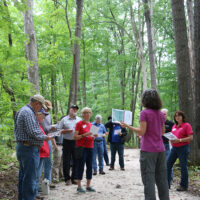 ber and hardwood products, and to maintain sustainable productivity of forest resources.
ber and hardwood products, and to maintain sustainable productivity of forest resources.
Purdue Extension annually offers a program, Hardwood University, to provide expertise, technical assistance, and education to industrial stakeholders engaged in wood products manufacturing to solve issues related to raw material quality, processing technologies, and manufacturing efficiency. Participants are business owners, chief executive and operations officers, production managers, supervisors, engineers, designers, equipment operators and industry associations in both primary hardwood products manufacturing for lumber and veneer, and secondary wood products manufacturing of furniture, cabinets, millwork, flooring and others. Nine monthly sessions during the academic year provide over 50 hours of instruction. Each session is a minimum of six hours and held at forestry or manufacturing worksites across Indiana. Hardwood industry professionals learned about sustainability of material supply, best management practices, procurement and marketing, tree, log and lumber quality and measurement, step-by-step processing techniques, equipment, and decision-making.
Participants may choose to focus on one of three tracks: 1) primary industry for log buyers, sawmill, stave mill, veneer mill, and lumber drying operators, 2) secondary industry for furniture, cabinet, millwork and other manufacturers of wood products, and 3) training a la carte for companies and individuals that would like to organize in-house training on a selected topic. Participants who finish all nine sessions in a chosen track within two years receive a program completion recognition from external partner Indiana Hardwood Lumbermen’s Association. In addition, sessions qualify for continuing education credits for certified foresters (Society of American Foresters), and consulting foresters (Association of Consulting Foresters). In one year of the program, 168 employees attended the sessions. Participants were employees new to the hardwood industry and employees preparing for advancement or cross-training.
On post-surveys, participants indicated they learned something new, increased awareness, and learned new skills. Participants indicated practices from the sessions that they plan to implement in the next 12 months. Most comments addressed lumber drying, including adjust kiln drying schedule, build/buy lumber dry kiln, change kiln startup procedure, change yard locations for drying particular species, eliminate standing water in yard, improve air flow in yard, and establish lumber drying operation. Also mentioned were: setting up lumber grading for company and training employees to grade lumber, conducting saw maintenance and changing sawing procedures, focusing on management – getting more education, implementing plan, or pursuing professional assistance, and identifying and sorting lumber by quality. Purdue Extension’s training for employees working in the hardwoods industry helps produce skilled workers for company success and to ensure sustainable management of woodlands across Indiana.
To read full article and others, check out Purdue Extension Showcase 2023.
Resources:
Hardwood Tree Improvement & Regeneration Center (HTIRC)
Tropical HTIRC
An Introduction to Trees of Indiana, The Education Store, Purdue Extension resource center
Native Trees of the Midwest, The Education Store
Shrubs and Woody Vines of Indiana and the Midwest, The Education Store
ID That Tree, Playlist, Subscribe to Purdue Extension – Forestry and Natural Resources YouTube Channel
A Woodland Management Moment, Playlist, Purdue Extension – FNR YouTube Channel
Investing in Indiana Woodlands, The Education Store
Forest Improvement Handbook, The Education Store
Finding help from a professional forester, Indiana Forestry & Woodland Owners Association
District Foresters for 10 plus acres, Indiana Department of Natural Resources
Wood Products, FNR Concentration
Wood is Best Video, Woodisbest.org
Rado Gazo, Professor of Wood Processing and Industrial Engineering
Purdue University Department of Forestry and Natural Resources
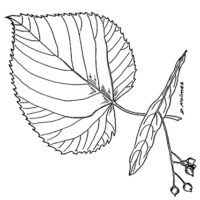 The classic and trusted book “Fifty Common Trees of Indiana” by T.E. Shaw was published in 1956 as a user-friendly guide to local species. Nearly 70 years later, the publication has been updated through a joint effort by the Purdue Department of Forestry and Natural Resources, Indiana 4-H, and the Indiana Department of Natural Resources, and reintroduced as “An Introduction to Trees of Indiana.”
The classic and trusted book “Fifty Common Trees of Indiana” by T.E. Shaw was published in 1956 as a user-friendly guide to local species. Nearly 70 years later, the publication has been updated through a joint effort by the Purdue Department of Forestry and Natural Resources, Indiana 4-H, and the Indiana Department of Natural Resources, and reintroduced as “An Introduction to Trees of Indiana.”
The full publication is available for download for $7 in the Purdue Extension Education Store. The field guide helps identify common Indiana woodlot trees.
Each week, the Intro to Trees of Indiana web series will offer a sneak peek at one species from the book, paired with an ID That Tree video from Purdue Extension forester Lenny Farlee to help visualize each species as it stands in the woods. Threats to species health as well as also insight into the wood provided by the species, will be provided through additional resources as well as the Hardwoods of the Central Midwest exhibit of the Purdue Arboretum, if available.
This week, we introduce the basswood or Tilia Americana.
The American basswood, which is also called linden, is commonly identified by its simple heart-shaped leaves with finely toothed margins, flat bark with long running lines up and down the trees, and possibly a ring of sprouts originating from the base of the tree. The clusters of small, nutlike seeds (⅓-inch in diameter)
are attached by a stem to a leaflike wing. 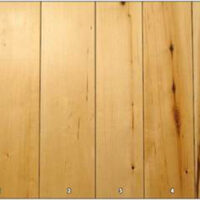
This species is often found on moist sites, deep, loamy soils, with its range stretching from the Great Plains east and from southern Canada through northern Arkansas, Kentucky and the mountains of North Carolina and Tennessee.
With heights reaching 70 to 80 feet tall, basswood can offer good shade. It also offers good flowering for bees. This species has a light colored, fine-grained wood varying from a white color to a very light brown or flesh color.
Due to its weight and stability, basswood has historically been used to make Venetian blinds and key stock in pianos. It also is a preferred species for carving, including items like hunting decoys, etc.
Full article also can be viewed with Purdue Forestry and Natural Resources News: Trees of Indiana: American Basswood.
Other Resources
Basswood – Hardwood Lumber and Veneer Series
Hardwoods of Central Indiana: American Basswood
Fifty Common Trees of Indiana
An Introduction to Trees of Indiana
Native Trees of the Midwest
Shrubs and Woody Vines of Indiana and the Midwest
ID That Tree YouTube playlist
Woodland Management Moment YouTube playlist
Investing in Indiana Woodlands
Forest Improvement Handbook
Wendy Mayer, FNR Communications Coordinator
Purdue University Department of Forestry and Natural Resources
Lenny Farlee, Sustaining Hardwood Extension Specialist
Purdue University Department of Forestry and Natural Resources
The classic and trusted book “Fifty Common Trees of Indiana” by T.E. Shaw was published in 1956 as a user-friendly guide to local species. Nearly 70 years later, the publication has been updated through a joint effort by the Purdue Department of Forestry and Natural Resources, Indiana 4-H, and the Indiana Department of Natural Resources, and reintroduced as “An Introduction to Trees of Indiana.”
The full publication is available for download for $7 in the Purdue Extension Education Store. The field guide helps identify common Indiana woodlot trees.
 Each week, the Intro to Trees of Indiana web series will offer a sneak peek at one species from the book, paired with an ID That Tree video from Purdue Extension forester Lenny Farlee to help visualize each species as it stands in the woods. Threats to species health as well as also insight into the wood provided by the species, will be provided through additional resources as well as the Hardwoods of the Central Midwest exhibit of the Purdue Arboretum, if available.
Each week, the Intro to Trees of Indiana web series will offer a sneak peek at one species from the book, paired with an ID That Tree video from Purdue Extension forester Lenny Farlee to help visualize each species as it stands in the woods. Threats to species health as well as also insight into the wood provided by the species, will be provided through additional resources as well as the Hardwoods of the Central Midwest exhibit of the Purdue Arboretum, if available.
This week, we introduce the quaking aspen or populus tremuloides.
The quaking aspen, also known as the trembling aspen, is adaptable to a variety of soils, ranging from moist loamy sands and clay, but it is shade intolerant. It is often found on the edge of woodlands or where the site has been disturbed, giving it access to full sunlight.
This species is identifiable by its whitish to grayish bark with dark spots where the branches come out of the trunk. It has small rounded leaves with very small teeth along the margin. Like most aspens, it has long flat leaf steams that are known to flutter in the wind.
Quaking aspen is found int he northern part of the state of Indiana. This species is found from Nefoundland through Alaska in the West, and as far south as Arizona. In the Midwest, it ranges south to northeastern Iowa, northern Illinois and Pennsylvania. It is also found in some scattered areas in the Appalachian Mountains. It is the most widely distributed tree in the United States.
According to the Hardwood Lumber and Veneer Series, aspen is one of our lightest woods with a 12 percent moisture content and a weight of 26 to 27 pounds per cubic foot. It was at one time relegated to the pulp and paper industry as a weed tree, however it is now a favored species for the manufacturer of panel boards.
Full article also can be viewed with Purdue Forestry and Natural Resources News: Trees of Indiana: Quaking Aspen.
Other Resources
Aspen – Hardwood Lumber and Veneer Series
Why Fall Color Is Sometimes a Dud – Purdue Landscape Report
Fifty Common Trees of Indiana
An Introduction to Trees of Indiana
Native Trees of the Midwest, The Education Store, Purdue Extension’s resource center
Shrubs and Woody Vines of Indiana and the Midwest, The Education Store
ID That Tree YouTube playlist
Woodland Management Moment YouTube playlist
Investing in Indiana Woodlands, The Education Store
Forest Improvement Handbook , The Education Store
Wendy Mayer, FNR Communications Coordinator
Purdue University Department of Forestry and Natural Resources
Lenny Farlee, Sustaining Hardwood Extension Specialist
Purdue University Department of Forestry and Natural Resources
When Lindsey Purcell, Matt Ginzel and Cliff Sadof began working on a research grant for Rotam North America regarding the use of trunk-injected emamectin benzoate to manage emerald ash borer, they set out to compare three commercially available insecticide injection systems.
They looked at the variance in number of injection points, whether or not ports were plugged and more, while also conducting a long-term study examining the difference in protection provided by spring and fall injections.
“We know that Emamectin benzoate is an excellent tool for protecting ash trees,” Sadof explained. “The trick is to get it into the tree before the tree has exhibited substantial decline. After the tree’s vascular tissue has been compromised, it becomes less able to transport the insecticide through the phloem into the canopy where it can kill leaves.”
A publication detailing the results of the research will be published soon in an article titled “Diffusion and Efficacy of Trunk-injected Emamectin Benzoate to Manage Emerald Ash Borer.”
Sadof and Ginzel also published a separate article “Factors influencing efficacy of an area-wide pest management program in three urban forests” in Urban Forestry and Urban Greening in March 2021, which details how early applications of insecticide can help with area wide protection of ash trees.
Due to his involvement in the Rotam grant, the Pacific Northwest National Laboratory (PNNL) and SymTree Science owner Terry Marie Braniecki asked Purcell if he would contribute his expertise and time as a plant healthcare subject matter expert toward PNNL’s better, more environmentally sensitive and economical delivery solution for their tree-health products.
After two years of research and development sponsored by Elemental Enzymes, and several iterations of prototypes made on 3D printers, the patented device, designed by the team of PNNL staff, Purdue faculty and private companies, is currently being beta tested by the industry with select distributors for commercial use.
“There are several similar devices out in the plant health care industry, but SymTree Science and Elemental Enzyme asked me what do you use, what do you like to use and can we make something better,” Purcell said. “Out of research always comes additional research and innovation, so I said here’s what I have in mind and PNNL’s engineers took my input and made it happen. It was initially made to deliver pesticides. However, it can also be used for micronutrient packages to correct deficiencies in the tree or applied for emerald ash borer control. Additionally, a product is in development for dates and coconut palms, which have major pest problems that are hard to control. These chemical injections can help the tree proactively and reactively to manage current infestations, but also act to prevent infestation.”
The reusable injection device works in conjunction with prepackaged recyclable injectors, which are installed directly into the tree vascular system at the root flare. If a tree is translocating efficiently, chemicals can be fully injected in minutes.
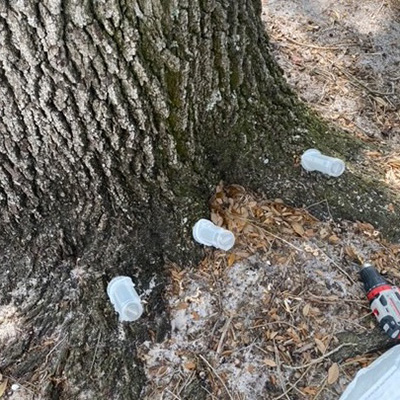 “The device is user friendly, it is simple and it protects the applicator because they have little to no exposure to chemicals and the environment has no exposure to chemicals,” Purcell explained. “It is very focused on the tree. It is not like you are broadcast spraying, where chemicals are vulnerable to drift. It is very safe for the environment and the people around it.”
“The device is user friendly, it is simple and it protects the applicator because they have little to no exposure to chemicals and the environment has no exposure to chemicals,” Purcell explained. “It is very focused on the tree. It is not like you are broadcast spraying, where chemicals are vulnerable to drift. It is very safe for the environment and the people around it.”
On the PNNL website, the device, its design and functionality are described as follows:
“The Tree Micro-Injector delivers nutrition, pesticides and fungicides faster and easier than similar commercially available injectors. The device resembles a laboratory syringe, with an exterior housing holding a uniquely designed compressible pod. The housing and pod are made of polypropylene, a versatile, recyclable materials. An internal steel spring holds the pod in place and allows it to be precisely compressed to eject a liquid formulation through the housing’s nozzle. The single-use disposable pod can be prefilled with a variety of specialty formulations, such as nutrition fertilizers, pesticides, fungicides or plant growth regulators.”
Purcell worked in conjunction with Kevin Simmons, Allan Tuan, Dustin Clelland, Stan Owsley and David Long from PNNL; as well as Terry Marie Braniecki, owner of Symtree Science LLC; and Stacie Schumer, product manager at Elemental Enzymes, on the project.
The group was recognized for their work with the Excellence in Technology Transfer Award presented by the 2022 Federal Laboratory Consortium for Technology Transfer. The Excellence in Technology Transfer Award recognizes employees of FLC member laboratories and non-laboratory staff who have accomplished outstanding work in the process of transferring federally developed technology. The award is based on contributions during the past 10 years.
The annual FLC awards are among the most reputed honors in the technology transfer field. PNNL has received 98 FLC awards since the program’s inception in 1984, including three in 2022. In addition to the injector, PNNL developed an airport security device that scans passengers’ shoes, which earned the Interagency Partnership Award; and a home energy efficiency assessment tool, which received the FLC Impact Award.
The FLC winners will be recognized at the 2022 FLC national meeting on April 6 in Cleveland, Ohio.
Resources:
Find an Arborist, Trees are Good
Tree wounds and healing, Got Nature? Blog
Ask an Expert: Tree Selection and Planting, Purdue Extension – Forestry and Natural Resources (FNR) YouTube Channel
Planting Your Tree Part 1: Choosing Your Tree, Purdue Extension-FNR YouTube Channel
Tree Installation: Process and Practices, The Education Store, Purdue Extension’s resource center
Tree Pruning Essentials, The Education Store
Subscribe to Purdue Extension-FNR YouTube Channel
Lindsey Purcell, Chapter Executive Director
Indiana Arborist Association
Wendy Mayer, Communications Coordinator
Purdue University Department of Forestry and Natural Resource
 Henry Quesada, FNR professor, assistant director of Extension and Agriculture & Natural Resources (ANR) Program Leader, obtained a BS in Industrial Production Engineering from the Costa Rica Institute of Technology (Costa Rica TEC). He worked for a commercial printing company before coming to Purdue as MS and PhD student in the Department of Forestry and Natural Resources. After completing his graduate education, Henry worked as a faculty member for Costa Rica TEC where he focused on undergraduate teaching and engagement with industry and communities. In 2008 Henry joined the Department of Sustainable Biomaterials at Virginia Tech as an extension specialist. At Virginia Tech, Henry developed a national extension program to increase the utilization of renewable materials to mitigate climate change, improve industry competitiveness and enhance livelihoods in rural communities. At Purdue, Henry is the ANR Program Leader where his main responsibilities are to provide leadership, strengthen and build on and off-campus relationships, articulate and communicate the ARN program’s vision, and to create a collaborative environment that fosters a culture of innovation.
Henry Quesada, FNR professor, assistant director of Extension and Agriculture & Natural Resources (ANR) Program Leader, obtained a BS in Industrial Production Engineering from the Costa Rica Institute of Technology (Costa Rica TEC). He worked for a commercial printing company before coming to Purdue as MS and PhD student in the Department of Forestry and Natural Resources. After completing his graduate education, Henry worked as a faculty member for Costa Rica TEC where he focused on undergraduate teaching and engagement with industry and communities. In 2008 Henry joined the Department of Sustainable Biomaterials at Virginia Tech as an extension specialist. At Virginia Tech, Henry developed a national extension program to increase the utilization of renewable materials to mitigate climate change, improve industry competitiveness and enhance livelihoods in rural communities. At Purdue, Henry is the ANR Program Leader where his main responsibilities are to provide leadership, strengthen and build on and off-campus relationships, articulate and communicate the ARN program’s vision, and to create a collaborative environment that fosters a culture of innovation.
“At Virginia Tech, I was able to connect with the forestry industry and communities and helped support initiatives locally, regionally and nationally. In my new position at Purdue, I am excited to continue to explore innovations and partnerships in Indiana, a state with a diverse agriculture and lumber industry from row crops to local foods to livestock to hardwoods. I am an entrepreneur at heart and believe we have many opportunities to work with Indiana farmers to identify and reach new markets with existing and new products.”
View more about Dr. Henry Quesada: Purdue Extension News-New ANR Program Leader joins Purdue Extension.
Resources:
Agriculture & Natural Resources, Purdue Extension
Wood Products, Area of Interest, Purdue Extension – Forestry and Natural Resources (FNR)
Subscribe: Purdue Extension – FNR YouTube Channel
Hardwood & Woodland Upcoming Events, Purdue Extension FNR
Henry Quesada, FNR Professor, Assistant Directory of Extension and ANR Program Leader
Purdue Extension
Diana Evans, Extension and Web Communication Specialist
Purdue University Department of Forestry and Natural Resources
South Bend Tribune: Look up the next time you pass a pine tree in Michiana — chances are it’s loaded with cones.
Conditions this season are ripe for an abundance of these woody reproductive organs of pine trees, and they’ll soon fall to the ground in both urban and forested areas.
Why so many? Lindsey A. Purcell, urban forestry specialist with Purdue University’s Forestry and Natural Resources Department, said some of the abundance could be the natural two-year, cone-producing cycle of conifers.
One year there’s few, if any, cones, while the following year the trees go into a seed-producing frenzy.
But more pine cones can also mean the trees are producing more reproductive seeds as a way to deal with the stress of a dry or changing climate.
It’s a matter of survival: The tougher, drier the season, the stronger the urge for the trees to reproduce through seeds so the species can survive.
“Drought conditions creates stress, and a lack of water seems to be an important stressor,” Purcell said.
Central Indiana has drought conditions this season, but northern Indiana areas near South Bend have fared better.
Trees have male and female cones. The males produce the pollen, while the female cones are often seen in the upper portions of conifers and hold the seeds that propagate the species.
Once pollinated, the tree’s female cones develop as the seeds mature, and they are usually conical or round-shaped. The individual plates on the cones, known as scales, keep the seeds safe from weather extremes and hungry animals until it’s warm and dry enough to release them to grow into new trees.
The cones are the protective coatings for the seeds, shielding them from water, wind and harsh conditions.
Most pine cone seeds are edible and not poisonous, but experts say Norfolk Island pine and yew trees are not true pine trees and both are toxic and should be avoided.
Resources:
Find an Arborist, Trees are Good
Tree Wounds and Healing, Got Nature? Blog
Ask an Expert: Tree Selection and Planting, Purdue Extension – Forestry and Natural Resources (FNR) YouTube Channel
Planting Your Tree Part 1: Choosing Your Tree, Purdue extension-FNR YouTube Channel
Tree Installation: Process and Practices, The Education Store
Tree Pruning Essentials, Youtube
Lindsey Purcell, Chapter Executive Director
Indiana Arborist Association (IAA)
South Bend Tribune
Recent Posts
- Liz Jackson Receives IHLA’s President’s Award, Featured in ANR Newsletter
Posted: April 17, 2025 in Forestry, Timber Marketing, Wildlife, Wood Products/Manufacturing, Woodlands - IDNR Offers Program Aiding in Property Tax Reductions – IFWOA
Posted: January 25, 2025 in Forestry, Timber Marketing, Wood Products/Manufacturing, Woodlands - Professor of Wood Processing and Industrial Engineering Rado Gazo Featured in ANR Newsletter
Posted: November 12, 2024 in Forestry, Wood Products/Manufacturing, Woodlands - Purdue Extension’s Showcase, Impacting Indiana
Posted: November 8, 2024 in Community Development, Forestry, Forests and Street Trees, Gardening, Land Use, Natural Resource Planning, Timber Marketing, Urban Forestry, Wildlife, Wood Products/Manufacturing, Woodlands - Purdue Extension Showcase- Hardwood University Ensures Sustainable Management
Posted: October 4, 2023 in Forestry, Wood Products/Manufacturing, Woodlands - Intro to Trees of Indiana: Basswood
Posted: April 29, 2022 in Forestry, Forests and Street Trees, Wood Products/Manufacturing, Woodlands - Intro to Trees of Indiana: Quaking Aspen
Posted: April 11, 2022 in Forestry, Forests and Street Trees, Wood Products/Manufacturing, Woodlands - Purcell’s Tree Microinjector Earns Excellence in Technology Transfer Award
Posted: April 6, 2022 in Forestry, Urban Forestry, Wood Products/Manufacturing - New ANR Program Leader joins Purdue Extension
Posted: March 4, 2022 in Timber Marketing, Wood Products/Manufacturing - South Bend Tribune – Michiana pine trees are loaded with cones that will soon hit the ground. Here’s why.
Posted: September 20, 2021 in Forestry, Wood Products/Manufacturing, Woodlands
Archives
Categories
- Alert
- Aquaculture/Fish
- Aquatic/Aquaculture Resources
- Ask the Expert
- Christmas Trees
- Community Development
- Disease
- Drought
- Forestry
- Forests and Street Trees
- Gardening
- Got Nature for Kids
- Great Lakes
- How To
- Invasive Animal Species
- Invasive Insects
- Invasive Plant Species
- Land Use
- Natural Resource Planning
- Nature of Teaching
- Plants
- Podcasts
- Ponds
- Publication
- Safety
- Spiders
- Timber Marketing
- Uncategorized
- Urban Forestry
- Webinar
- Wildlife
- Wood Products/Manufacturing
- Woodland Management Moment
- Woodlands


